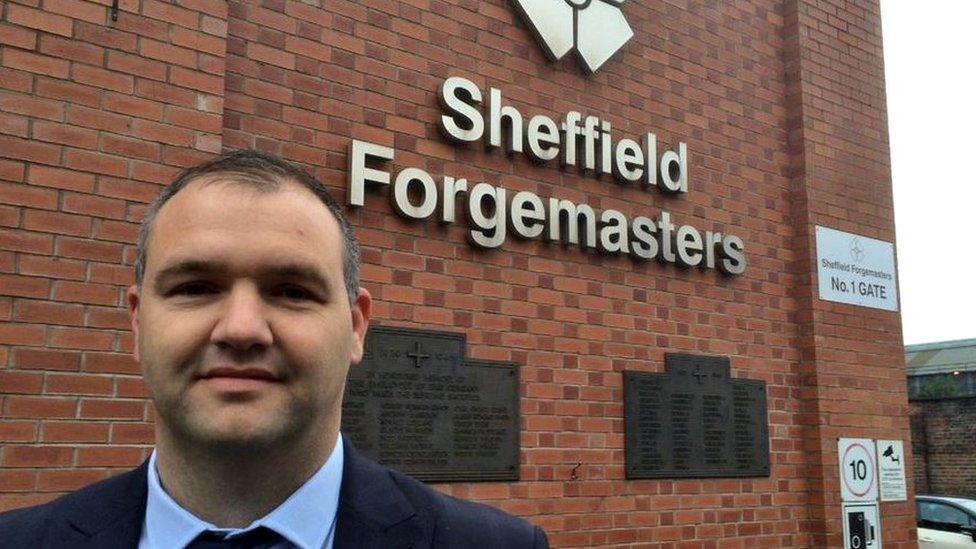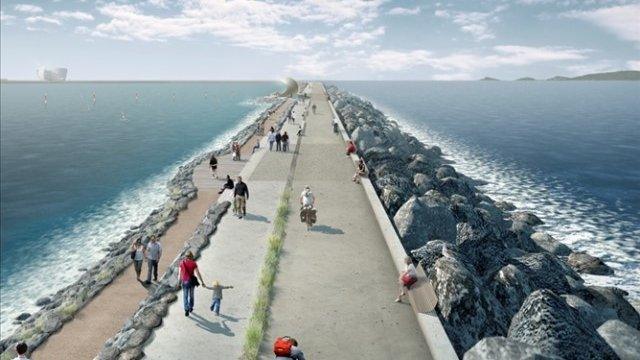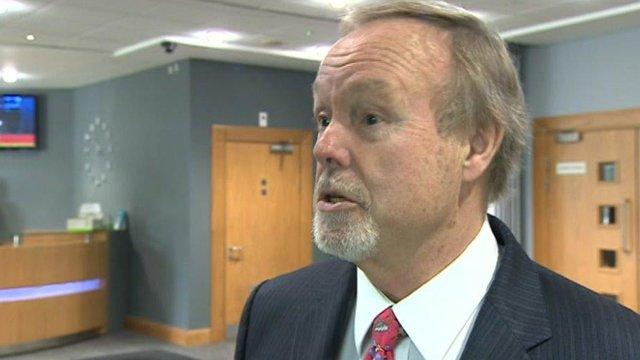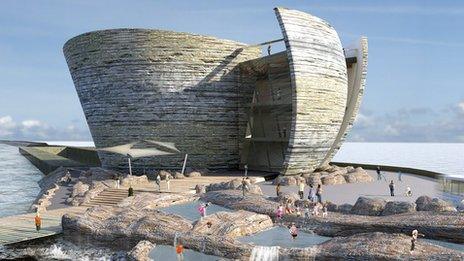Sheffield Forgemasters host tidal lagoon meeting
- Published

Firms met at Sheffield Forgemasters to lobby Sir Charles Hendry over the proposed Swansea Tidal Lagoon project
Northern engineering companies could benefit from a major tidal energy project 230 miles away in South Wales.
Former energy minister Sir Charles Hendry visited Sheffield Forgemasters earlier as part of his independent review into the feasibility of the £1.3bn Swansea Tidal Lagoon.
Firms lobbied Sir Charles to tell him of the capabilities of northern engineering industries.
The tidal power project was given the go-ahead in June 2015.
It has been hailed as a "predictable energy source" and claimed to be a guaranteed way of generating electricity that could power up to 30% of homes in the UK.
Plans for the tidal lagoon include 16 turbines to provide power for 120,000 homes for 120 years.

Gareth Barker said the project would be a "huge boost" to northern engineering companies
Sheffield Forgemasters said it wanted to manufacture parts for turbine shafts and blades.
Gareth Barker, group operations director at Forgemasters, which specialises in the production of large forgings and castings, said the company would "share the pie" with other foundries if successful in the bid.
"This is a huge engineering project in the UK for the next 10 years," he said.
"We are lobbying Sir Charles from a UK and northern manufacturing powerhouse point of view to show what we've got in the North.

If the lagoon at Swansea Bay goes ahead a five-mile (9.5km) causeway could be built out to sea
"We need to be proud of what we do, and show [the government] that the engineering business is still enormous up here."
In July, researchers said Wales had only about half of the manufacturing capability needed for the tidal lagoon.
Mr Barker said depending on Sir Charles' report, things could move as early as November.
He said the project could "revolutionise green energy."

Watch Tidal Lagoon Power's video of how the turbines would work
How the lagoon would work:
A six-mile long seawall would loop two miles out to sea from close to the mouth of the River Tawe and Swansea Docks, and make landfall close to the east of Swansea University
It would house 16 underwater turbines, generating electricity on the rising and falling tide
Enough renewable power would be produced for 155,000 homes for 120 years
Source: Tidal Lagoon Power Ltd
- Published28 July 2016

- Published10 February 2015

- Published18 March 2015

- Published18 March 2015

- Published7 February 2014
